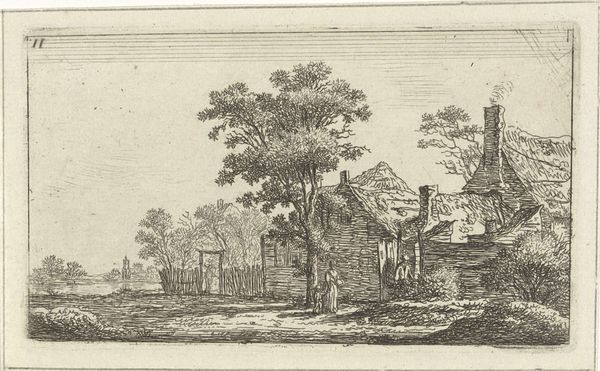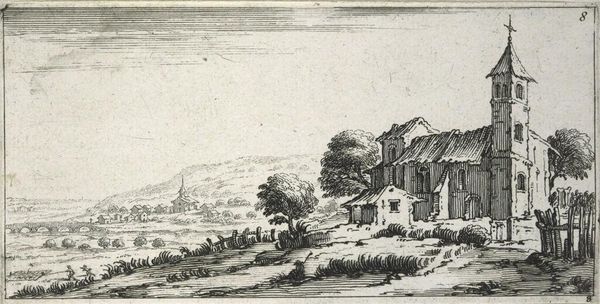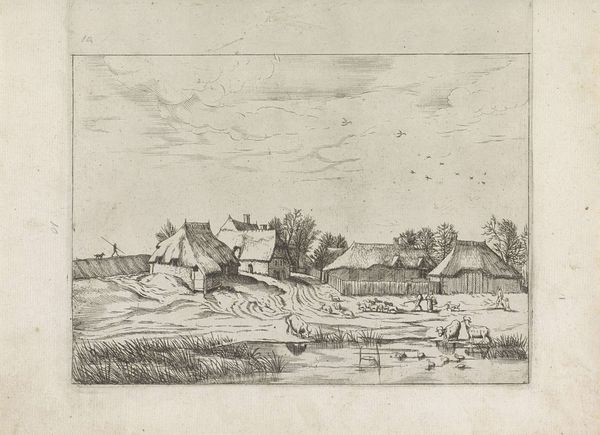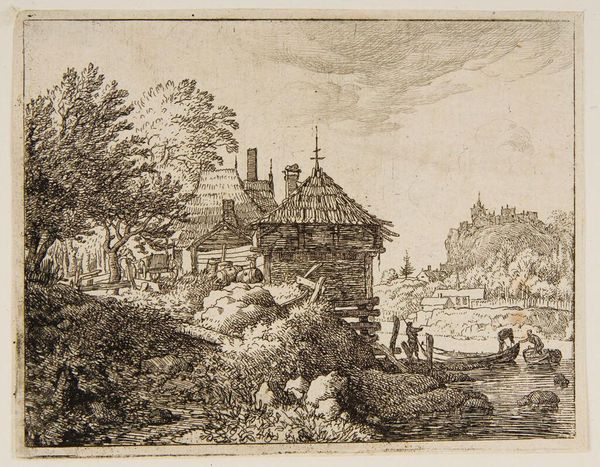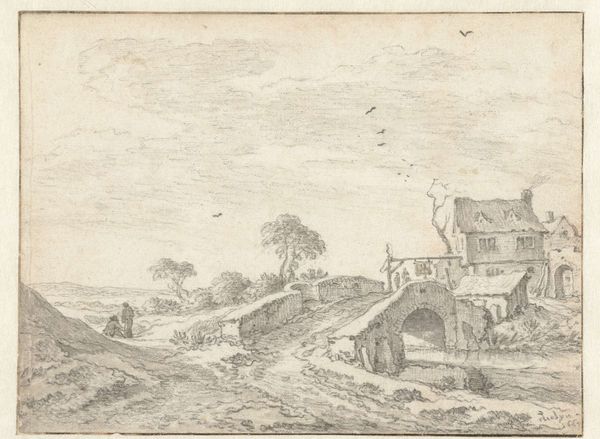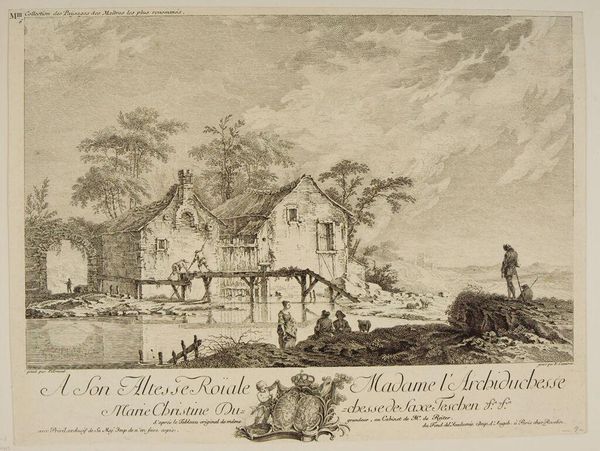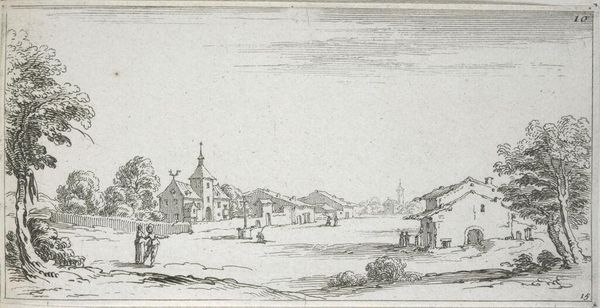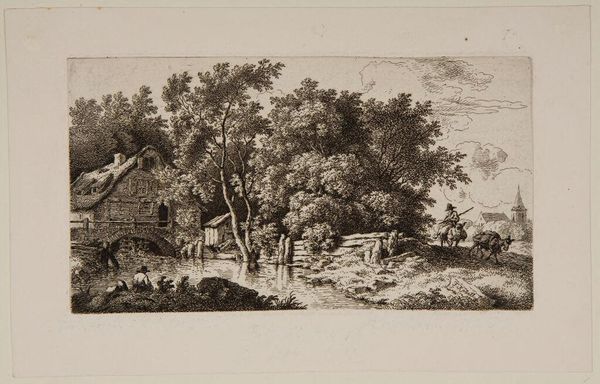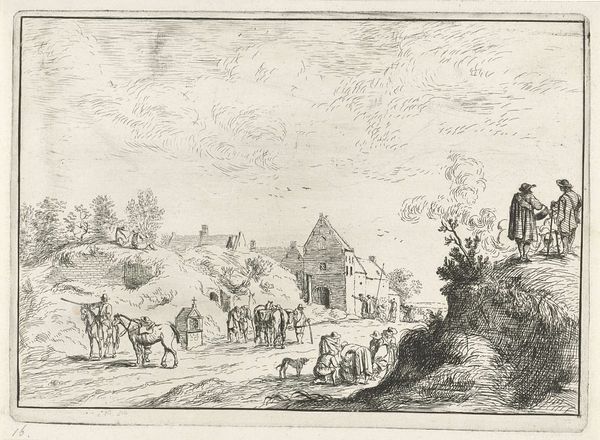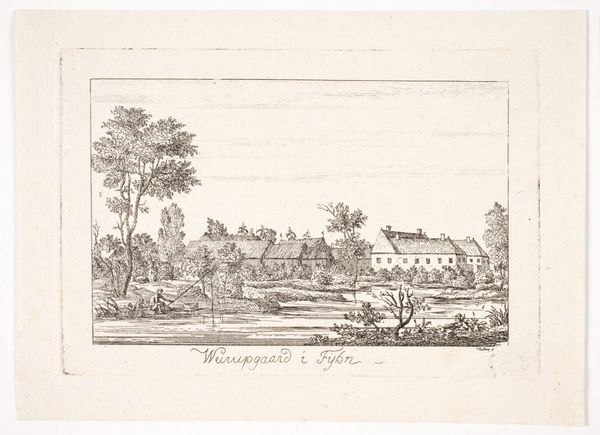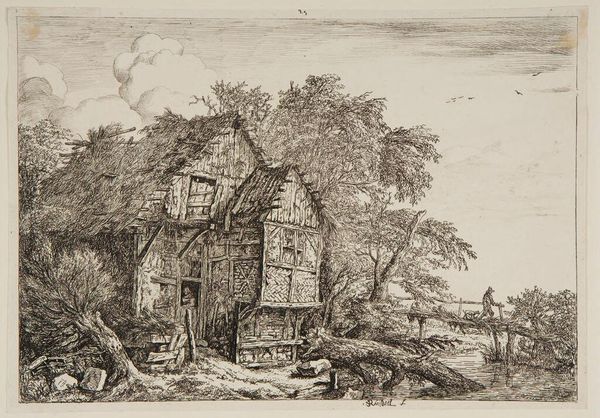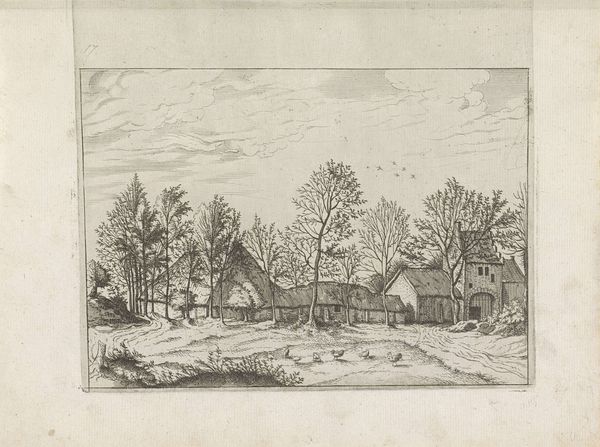
print, etching
#
neoclacissism
# print
#
etching
#
landscape
#
cityscape
#
history-painting
Dimensions: 133 mm (height) x 186 mm (width) (bladmaal), 98 mm (height) x 149 mm (width) (plademaal)
Editor: This etching, "Bjernede kirke," by Johan Bülow, dates back to 1776. The church sits elevated with sparse buildings around it, the steeple seeming disproportionately small. It evokes a sense of isolation. How do you interpret this work within its historical context? Curator: The landscape etching of "Bjernede kirke" is much more than an aesthetic representation. During this period, we see a rise in national romanticism where the local, rural church becomes a symbol for national identity. Look at the seemingly humble figure in the foreground: is this figure an idealized representation of rural labour, subtly reinforcing social hierarchies? How might this image have been consumed and understood differently by various social classes at the time? Editor: That’s interesting – I hadn't considered the figure as a representation of social dynamics. It makes me think about the power structures inherent in these kinds of landscapes. Were these types of images used as a way of promoting a specific social order? Curator: Exactly. The apparently objective representation of the church within the landscape should make you consider its potential role in the construction and reinforcement of power dynamics. Was this idyllic presentation also obscuring inequalities or social tensions present in rural life at the time? Furthermore, how can a contemporary audience begin to unravel these complex relationships within the print? Editor: So, it's about questioning what this image is actually *doing*, socially and politically, beyond just depicting a pretty scene. That perspective makes me consider historical artwork in a completely new way. Curator: Indeed. Examining historical images requires us to understand both their aesthetic and socio-political dimensions and what is unsaid in the presentation. I think the combination has added a new critical dimension for you in how to view art of the period.
Comments
No comments
Be the first to comment and join the conversation on the ultimate creative platform.
